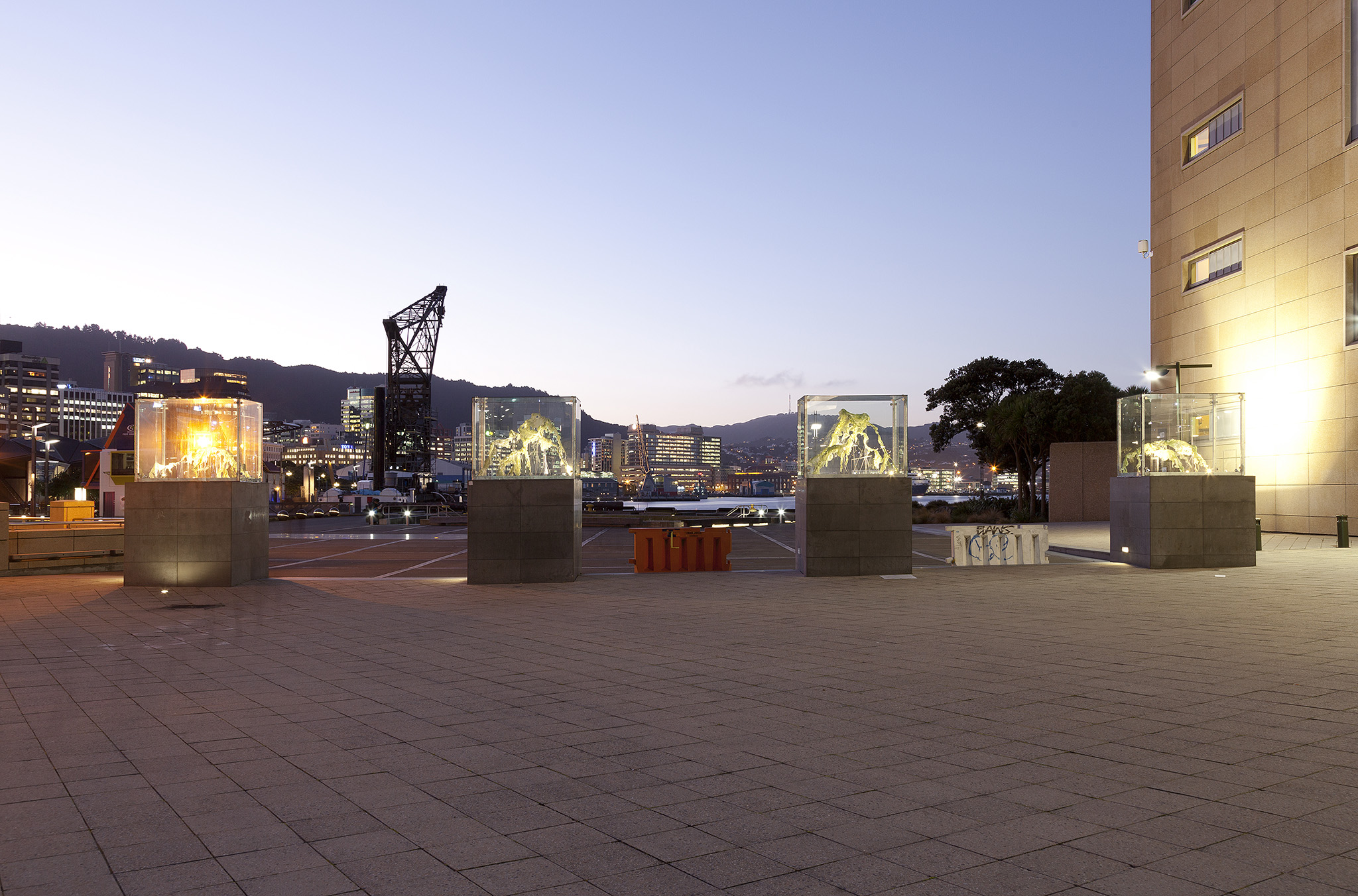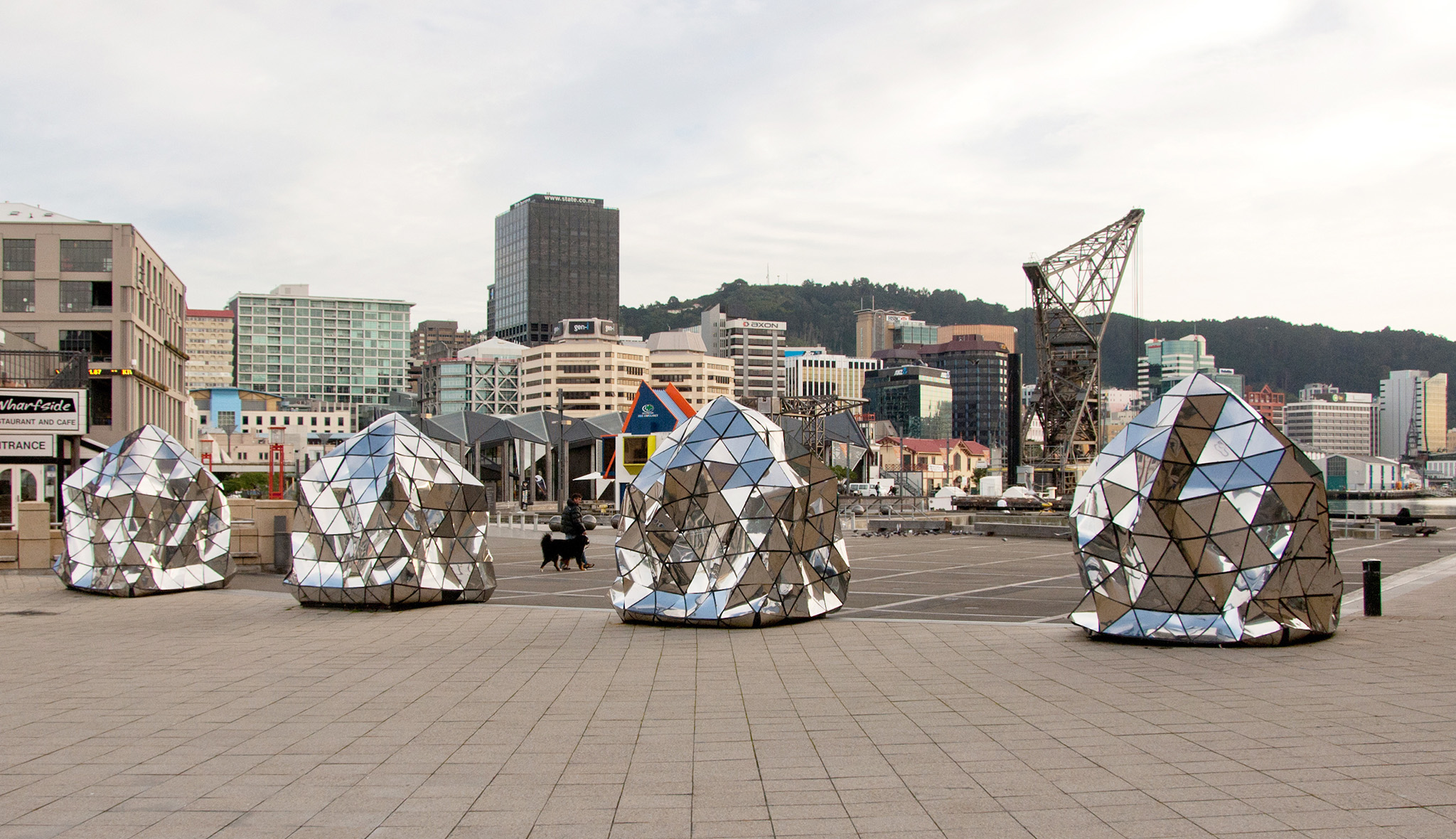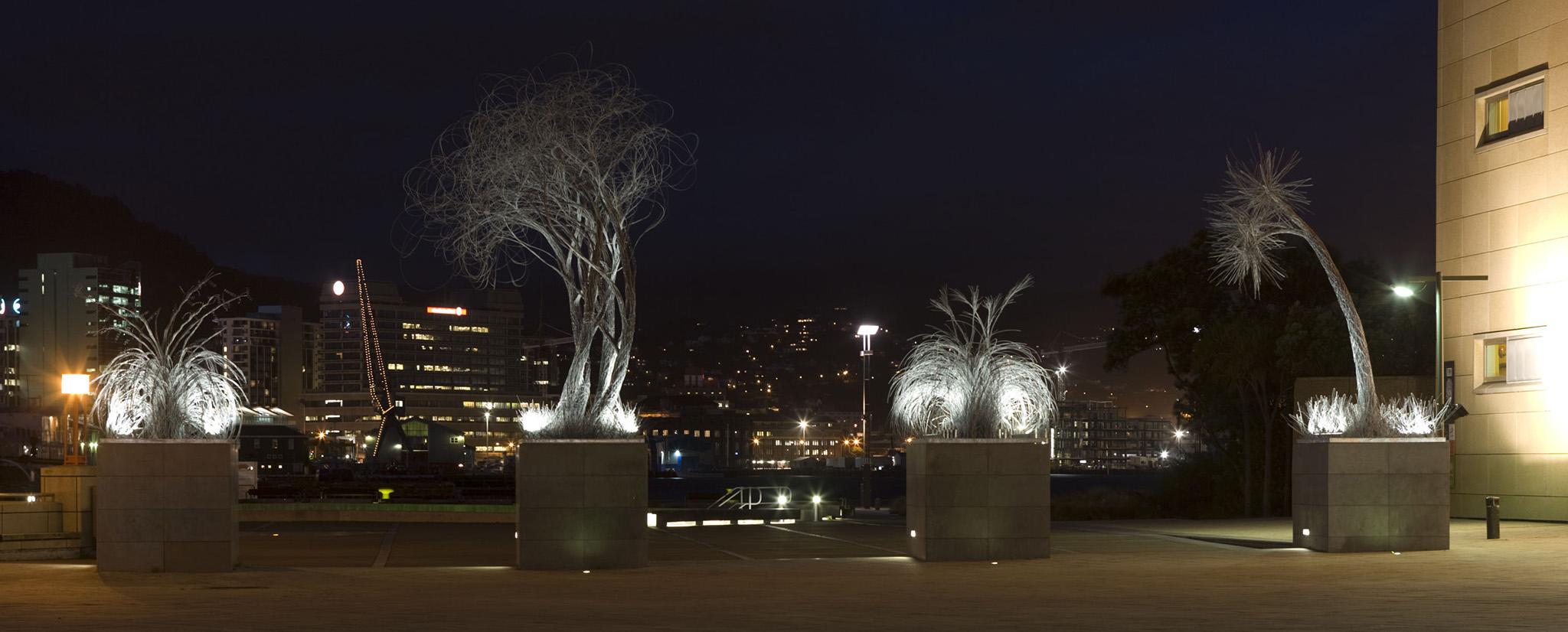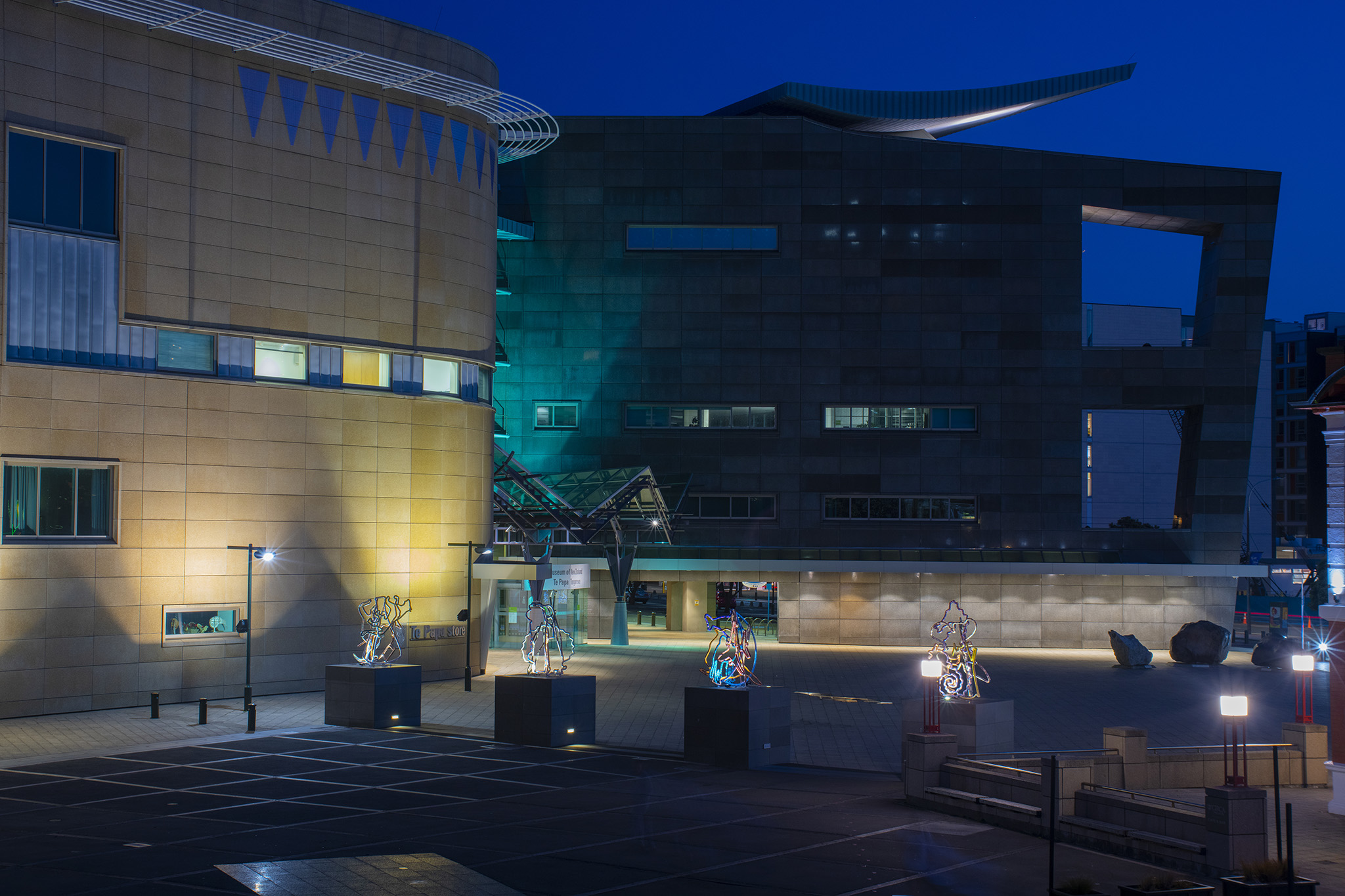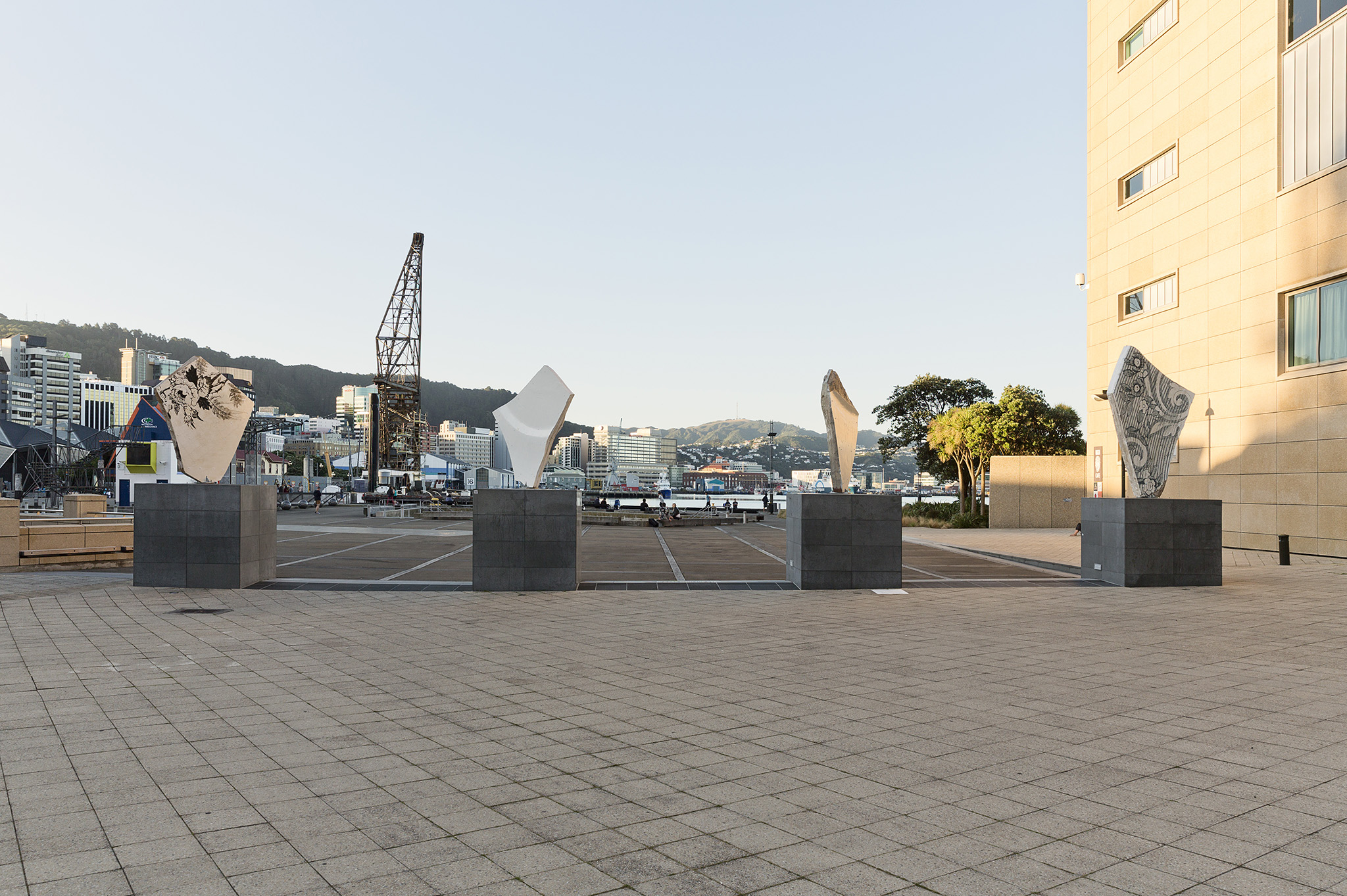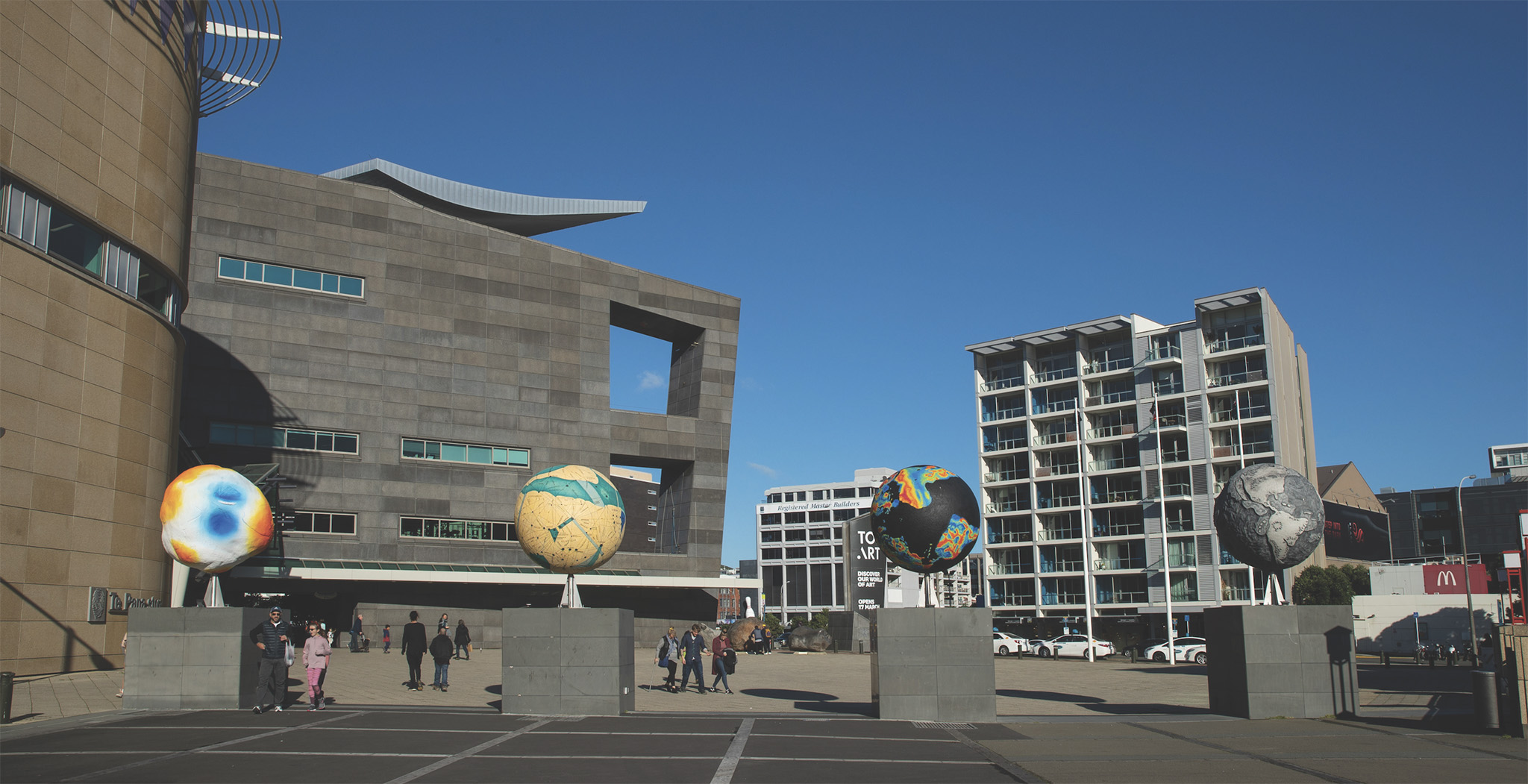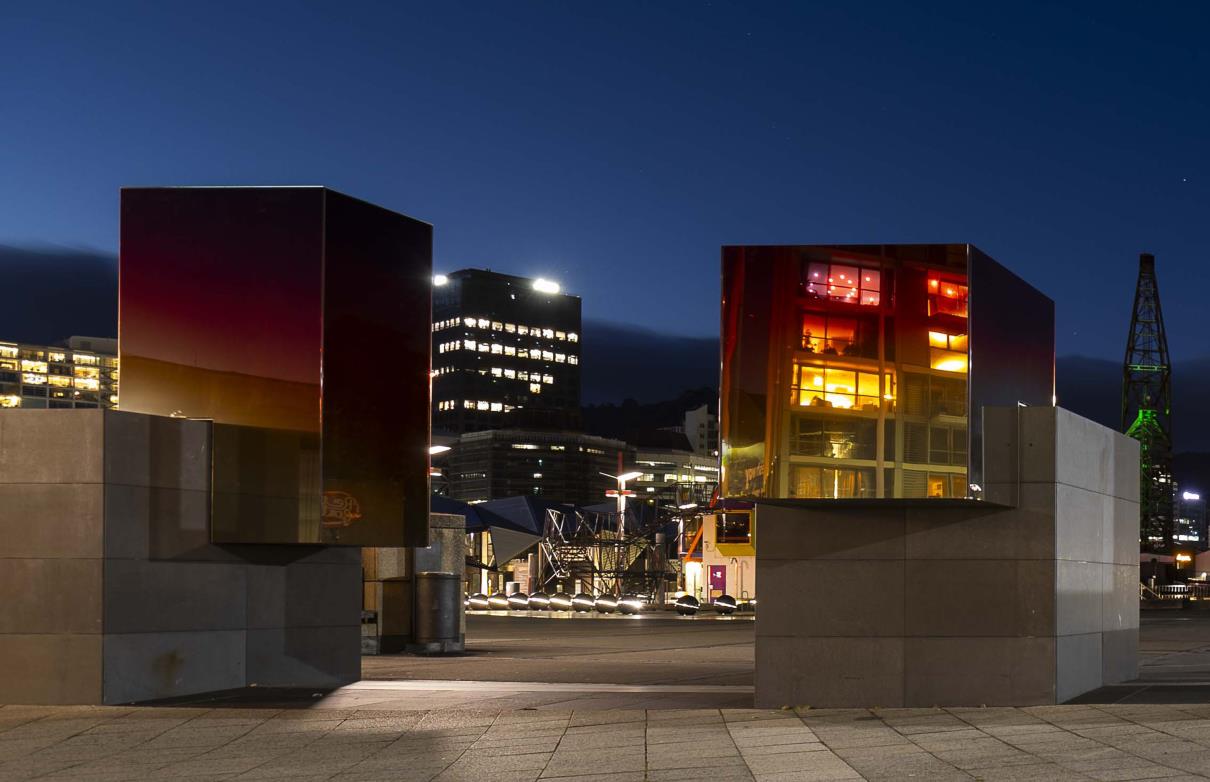The aim of the Collin Post 4 Plinths Project (formerly the 4 Plinths Sculpture Award) is to foster art, artists and audience interactions, and to provide an opportunity for established and emerging artists to work in the area of large-scale public sculpture.
Temporary sculpture on the 4 Plinths enables artists to realise a public sculpture, with all the challenges of scale, robustness and rigour that come with working in a tough environment and in a highly visible space.
The project forms part of the New Zealand International Arts Festival’s visual arts programme.
The first installation was Green Islands, 2008-10 by Regan Gentry. His wire trees were an ironic response to the absence of vegetation in the stark, open site.
The second was Mimetic Brotherhood, 2010-12 by Peter Trevelyan. His four rubberised, abstract shapes engulfed the plinths, their shiny steel surfaces reflecting and mimicking everything within range – clouds, the harbour, and passers-by.
The third was Out of the Dusk, 2012-14 by Joanna Langford. It reflected the artist’s response to environmental degradation and to the industrial features of the harbour close by.
The fourth was Rita Angus used to grow her own vegetables, by Glen Hayward was in place from 2014-2016 and featured four replica shards of broken pottery from the Rita Angus house garden. Constructed of laminated macrocarpa and painted to the finish of crockery, the shards were 50 times the scale of the originals with the patterns carefully reproduced.
The fifth was a (very) brief history of Aotearoa, 2016-18 by Kereama Taepa. The artwork comprised four pixelated 'space invader' icons in the form of: a wharenui, representing the original Māori habitation of New Zealand; a mitre, representing Christian missionaries and early European settlements; a crown, representing the Queen and the signing of the Treaty of Waitangi in 1840; the Beehive, representing our current government. Each plinth had a QR code attached, these took the viewer to a space invaders game that used the icons from the sculptures.
The sixth was Other Worlds, 2018-20 by Ruth Watson. The work comprised four globes that conveyed enigmatic and unfamiliar views of Earth or Mars. Each globe was based on an existing model from the world of science or map history. The artist aimed to show us the world anew, encouraging fresh thinking about images we take for granted.
The seventh was Signal Forest, 2020-22 by Yolunda Hickman. Signal Forest was a thicket of entangled images on each plinth. Based on stencil motifs, the simplified shapes depicted a range of animals, plants, transportation, technology, and cultural items. These shapes were then applied with a pattern or image drawn from the collection and archives of Te Papa Tongarewa.
The eighth was #PaperPalsAotearoa, 2022-24 by Ben Pearce. The work was four larger than life origami-like animals which sat on each of the four plinths. The work talked to today's environment, the treatment of wildlife, the relationships between continents, and our need to co-exist with other life forms - we need to find a balance.
Merging Blocks by Sabine Marcelis is the ninth Collin Post 4 Plinths project. Sabine says “Each volume has been designed to reflect a different aspect of the city: the faces of those passing, the tangle of clouds or the emptiness of the sky – they show us the mood of a city and the hijinks of the weather. Installed in March 2024, the works will be on display from 2024-26.
With generous funding from the Post Family Trust and support from Wellington City Council and the Wellington Waterfront team.

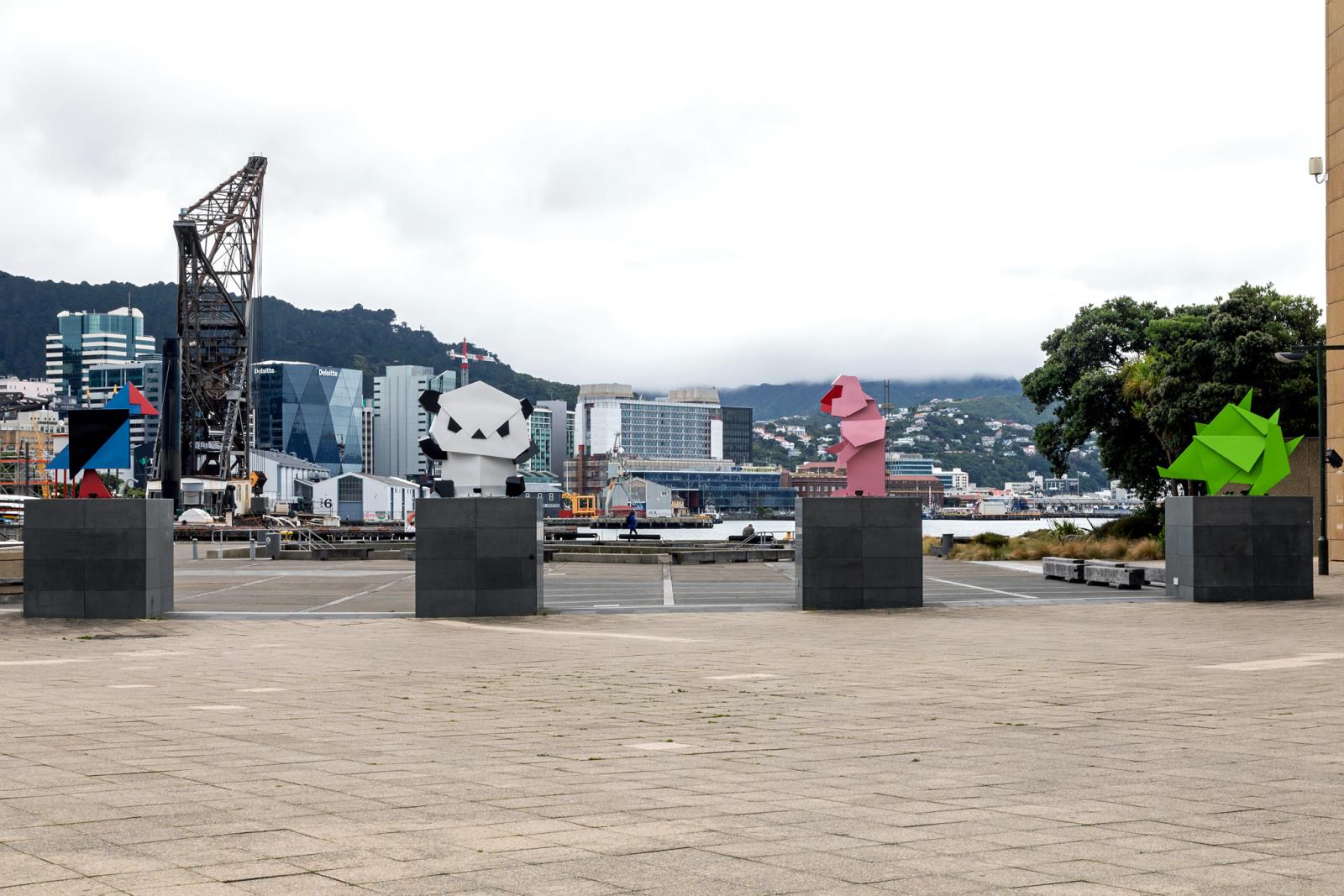
-brief-history-of-Aotearoa_4P5.jpg)
